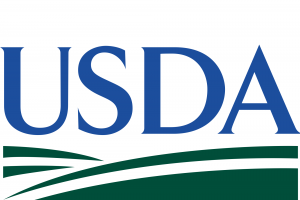
Even before the current economic crisis hit the United States, the decline of domestic manufacturing, the rise of globalization, and increased competition for good jobs had created unprecedented challenges for low-skill American workers. These challenges have disproportionately affected older industrial metropolitan areas such as Baltimore, where the unemployment spiked to 5.8% in December – its highest rate this decade.1 In a time when companies are downsizing and Americans’ budgets are stretched, it becomes even more beneficial to local business and community leaders to educate and train low-skill workers in employment clusters unique to their metropolitan area.
“Collaborative partnerships represent the first step in a regional workforce development strategy that fosters employment opportunities for low-skill workers,” according to a new report, Employment Options for Low-Skill Workers in the Baltimore Metropolitan Area, produced by Optimal Solutions Group, LLC (Optimal). The research team included Laurel Davis, MCP, Joe Parilla, John Foster-Bey, MBA, and Mark Turner, PhD.
To strengthen local efforts in recruiting, training, and retaining low-skill workers, the authors suggest creating regionally focused, occupation-specific task forces that emphasize communication and collaboration among the region’s educational, government, nonprofit, and philanthropic institutions. The specific occupations that appear to be the most viable options for low-skill workers in the Baltimore metropolitan area fall within six broad categories: health care, automotive services, construction trades and heavy equipment operations, food service and hospitality, professional services, and sales. This timely research, funded by the Ford Foundation, aims to provide Baltimore area business leaders and policymakers with additional tools to use when making key workforce development decisions.
“Occupation-specific collaboration among these local stakeholders is paramount to providing job opportunities for the Baltimore region’s less-skilled population,” according to the report, which suggests a framework for coordinating strategies to include:
Concentrating recruiting efforts to make low-skill workers aware of available education and training options;
Emphasizing collaboration among training programs to address redundancies and gaps in the regional education and job training infrastructure;
Facilitating dialogue between employers and trainers to create programs that address skill deficiencies, provide remedial training, and outline career paths that clearly delineate connections between training and job placement; and
Pooling the collective knowledge and resources of workforce development agencies across jurisdictions.
The report also notes that three key strategies are necessary for the success of the establishment of any workforce intermediary: support from employers driven by employee demand; financial backing from the local philanthropic community; and dynamic, well-connected leadership.
The researchers used a methodology (adopted from a report by Jobs for the Future) to select locally relevant job clusters for low-skill workers in the Baltimore metropolitan area. Researchers at Optimal then performed a multi-stage analysis—focusing on local growth occupations, refining the list through risk analysis, and further refining the occupations via interviews with local community and business leaders—to select the most viable employment options within the Baltimore metropolitan area. “The 10 occupations identified through this study provide reasonable entry wages and an opportunity to grow wages over time,” according to the report. “These jobs represent the potential for careers.”
Against the backdrop of the current economic climate, low-skill workers in the Baltimore metropolitan area face stark challenges to obtaining good jobs in the 21st century economy. The report maintains that a competitive regional economy is not possible without a skilled, capable workforce. For Baltimore, this has historically meant attracting high-skill, college-educated workers to the region. However, building a sustainable economy also requires facilitating the movement of low-skilled Baltimoreans into viable jobs within sustainable industries. “A regional focus to occupation-specific workforce development recognizes that the movement of goods, people, and services is not limited by city boundaries or school districts,” Optimal researchers write. “Strategies that provide employment opportunities for low-skill workers in an increasingly regional economy must be created using regional coordination.” By identifying strategies for moving low-skill workers into viable career paths, this report represents a first step in this process.
Findings from the first phase of this study were presented at the Urban Affairs Association Conference in Spring 2008 and published in Retooling for Growth: Building a 21st Century Economy in America’s Older Industrial Areas (McGahey, RM, and Vey, JS, eds. Washington, DC: Brookings Institution Press, 2008).
Download the full report.
1 “Civilian Labor Force, Employment & Unemployment By Place of Residence (LAUS) – Baltimore-Towson, Maryland Metropolitan Statistical Area (includes Baltimore City, and Anne Arundel, Baltimore, Carroll, Harford, Howard, and Queen Anne’s counties).” Career and Workforce Information. Maryland Department of Labor, Licensing, and Regulation. 2008. 23 February 2009.





